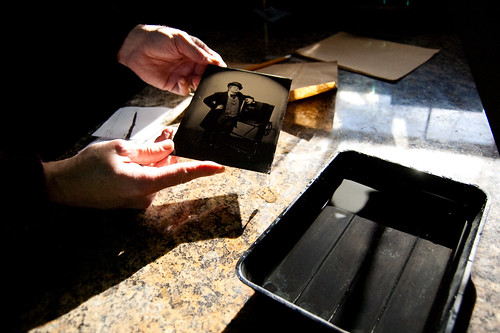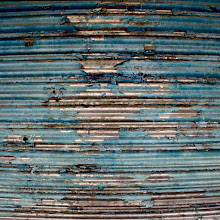
Freshly Fixed Tin Type, R.J. Gibson's Photography Studio. Gettysburg PA.
The medium of photgraphy is so intrinsically linked to the transformation of subject and the manipulation of reality. I have spent my adult life clinging to a camera, my eye searching and searching for photographs of places and other people that I rarely allow myself to step in front of the camera, to allow myself to be seen in any other way besides what is represented to me in my head. I fear cameras and their steady gaze in the hands of the untrained for fear of seeing myself as I really am, physically.
In November, I had the pleasure of sitting for R.J. Gibson, a photographer working in the tradition of the wet plate process. I knew when I went to his studio I wasn't interested in being photographed as a typical female of the 19th century, not in ballgown nor in day dress. I definately knew that I wanted to be dressed as a male character; originally I figure I would be dressed as a Confederate infantry soldier.
While I know that "reenactment" photographs can conjure up unpleasant associations for a lot of people, Gibson's process of making the photograph for the subject was really incredible to witness. The final portrait is very much a collaborative work. In talking to him, he figured out a way to photograph me as my 19th century alter in a way that was both fun and thoughtful. After telling him that I was a photographer, he felt it would be better to dress me up as a photographer from the 1800's. I got to pose next to a gorgeous piece of photographic history, an 8x10 wooden view camera with original lenses, constructed around 1865. The photograph it's self had an exposure of about 14 seconds. I could blink and breathe but my eyes could not move. It was strange to stand in front of a camera lens and be photographed for a full 14 seconds. While my mind was totally blank while standing in front of the camera, I couldn't help but wonder if, somehow, 14 seconds could somehow capture something more than 1/30 of a second could.

